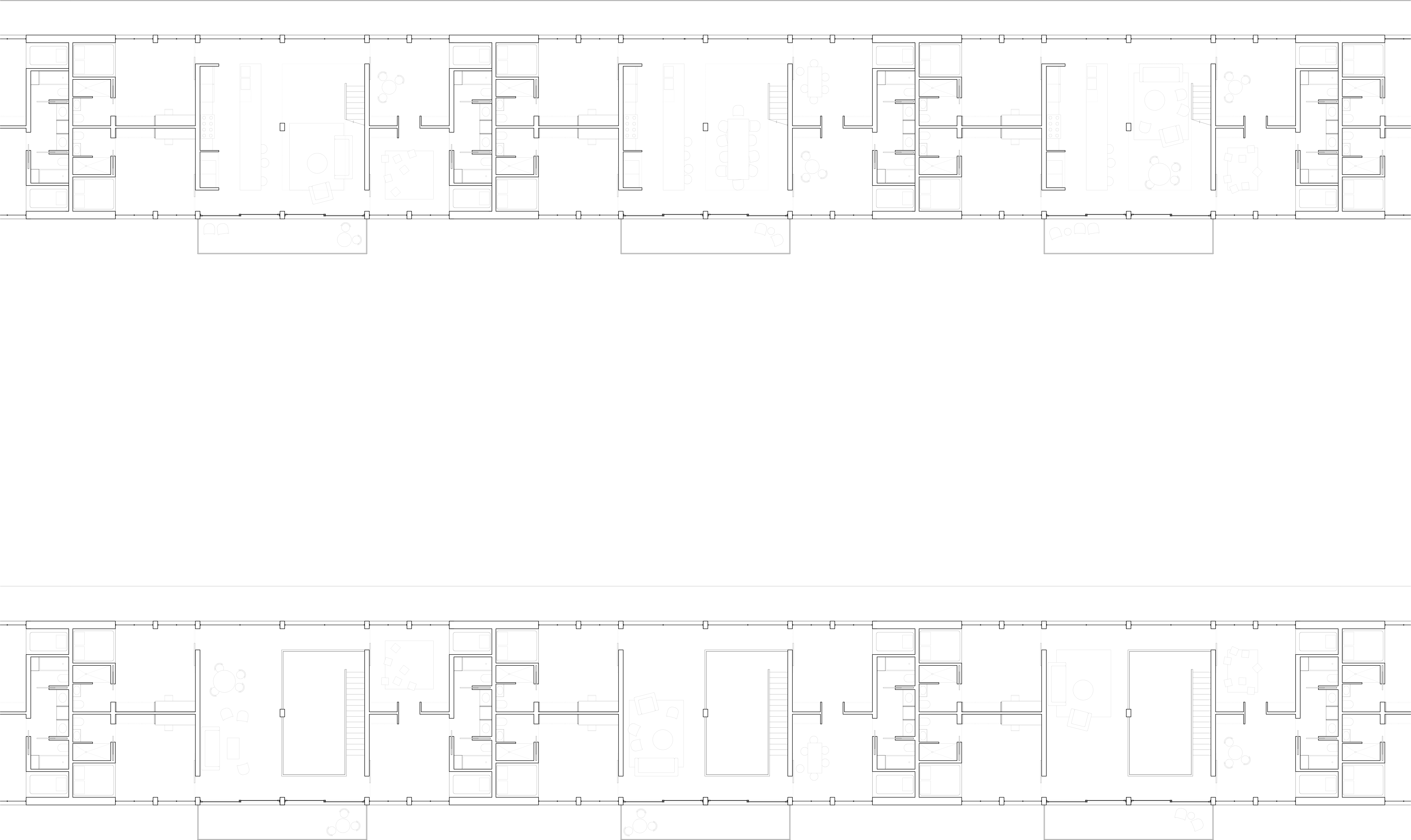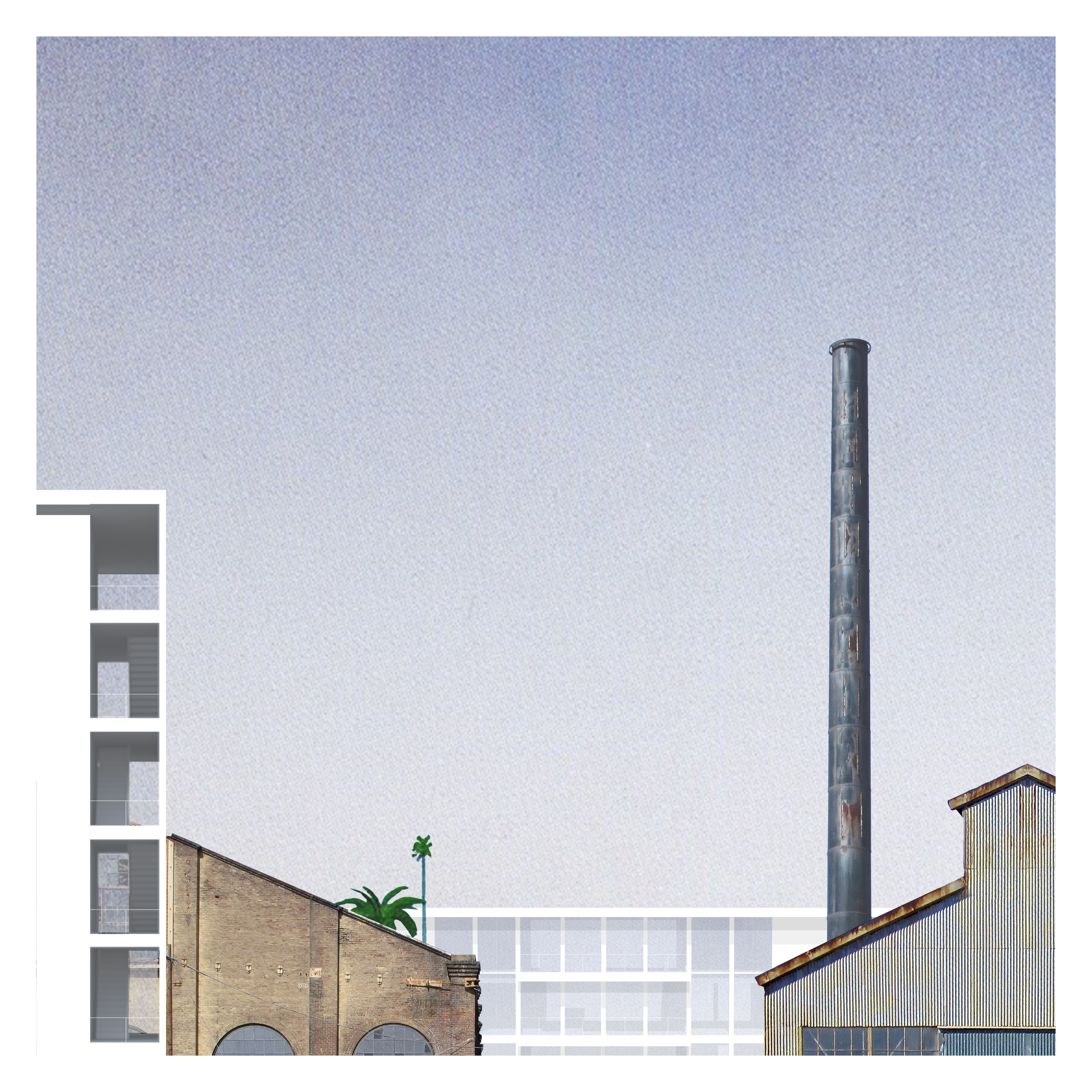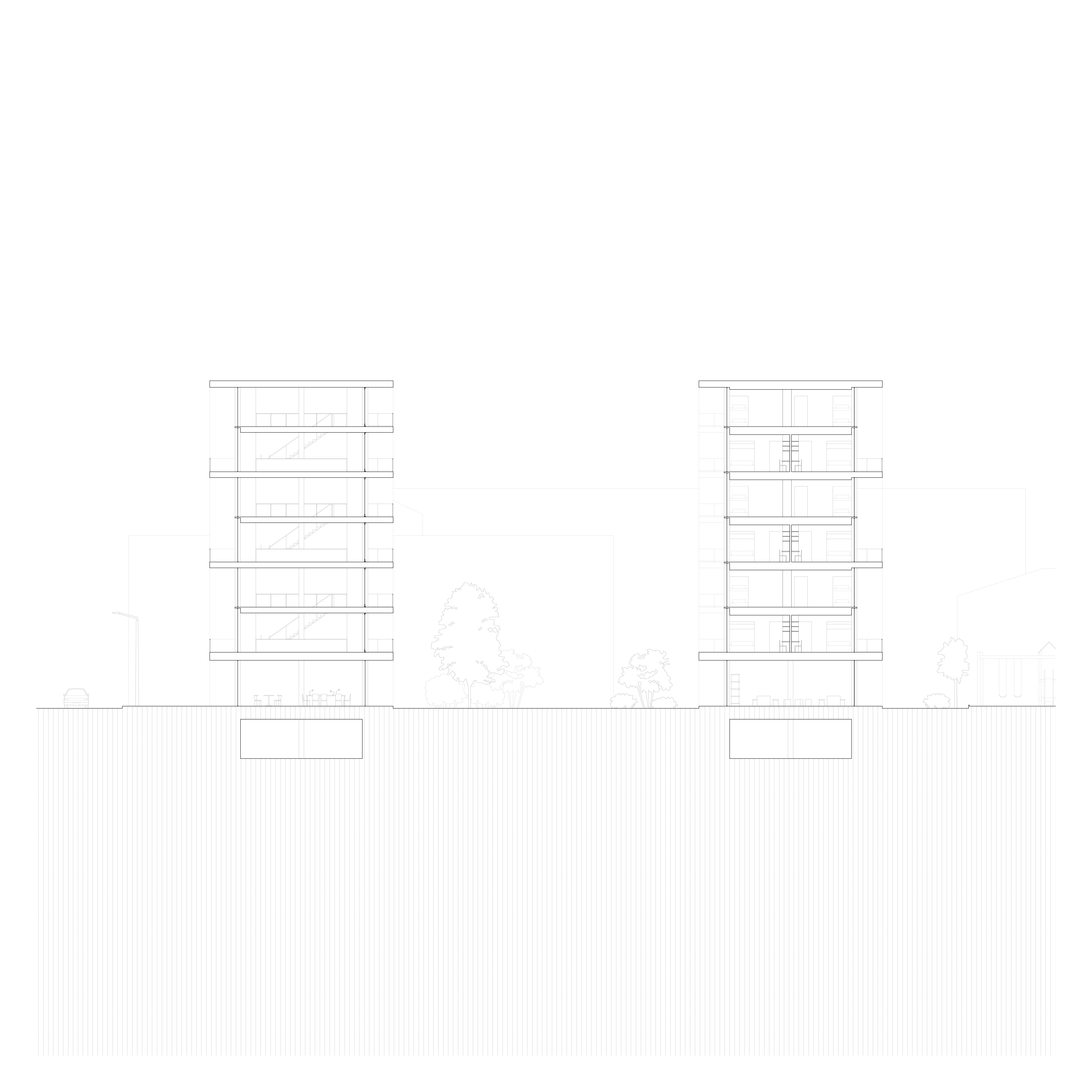Vincula — Housing for San Francisco
Advanced Studio, Yale School of Architecture, Spring 2015
Critics: Pier Vittorio Aureli & Emily Abruzzo
Project done in collaboration with Sarah Elaine Smith (YSOA ‘15)
Vinculum: “A bond of union,” from the Latin vinc(ire): ‘to bind.’
The current condition of housing in San Francisco is often described as a “crisis.” The housing crisis is coupled with a crisis of legibility of form-of-life. In cities like San Francisco, apartments and houses designed for nuclear families are occupied by groups of 8 to 10 precarious individuals, sharing bathrooms and bedrooms and sacrificing their privacy. Housing has become a burden, and sharing is perceived as an undesirable and desperate survival tactic. There is a disjuncture between the increasingly precarious form-of-life and San Francisco’s built fabric; the form-of-life is masked, hidden from sight. As a result of this illegibility, the housing crisis is often met with apathy and dismissal.
Our project addresses the growing wealth schism in San Francisco and the resulting disenfranchisement of the middle class subject. The middle class, a loose term at best, perhaps better described as the politically disenfranchised majority, is a fractured group of people with common goals but no solidarity. The subject is the precarious individual who desires to remain in place, form a community, parent or co-parent without the typical sacrifice of lifestyle, space and privacy. Through a new dwelling condition, the subject is able to live, work and raise children without forced mobility, sacrifice of privacy and disenfranchisement. Dwelling is defined by the material components and activities of domestic necessity.
Our project reconsiders the typical apartment by deconstructing its framework and reconstructing it in order to make legible the privacy and sharing of the precarious subject. The 400-sqft apartment is broken down into its constituent zones, with a gradient from the inherently private – what we call the cell – to the inherently social. The multiple social spaces pool together into a generous communal space while maintaining the privacy of the individual cell: what develops is a mutually beneficial system of gains. Each vinculum produces a gradient of privacy from the intimate cell to the shared communal space. One unit is two stories high, and consists of eight private cells and one large shared space. The private cell can either be inhabited by a single person, a couple, two roommates, or children. The minimum amount of people housed in one unit is 8, and the maximum is 16. When this formula is applied to the San Francisco block proportions, we are able to linearly fit 5 units side by side and stack three units tall; this gives us a prototypical configuration for the vincula buildings’ deployment in San Francisco. The grouping of cells aggregates to provide a larger, shared social sphere and, in turn, guarantees the individual privacy. The solitary, the bodily, and the explicit are given their designated zones. By proposing the coexistence of privacy and sharing, we allow for the individual to remain in place and avoid forced mobility due to lack of space, lack of privacy or a combination of both. The proposed dwelling offers the possibility of celibacy, relationship, and child care to occur in one place while maintaining the right to individual privacy.
Vincula is a system of sharing and mutual gain, a micro and macro approach to a condition of crisis. This project creates a new gradient of the very private to the social sphere: a new concept of sharing that maintains the autonomy of the individual through the promotion of togetherness. The gradient becomes legible through clear spaces of privacy, and spaces of sharing on the scale of the unit, the building and the neighborhood.















